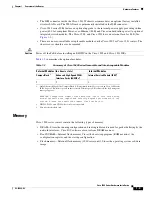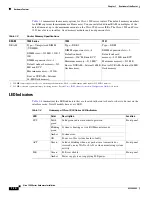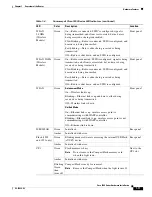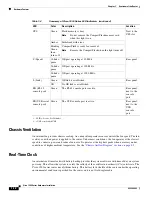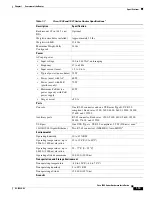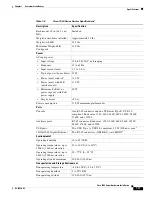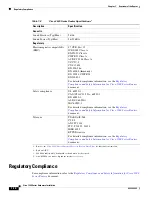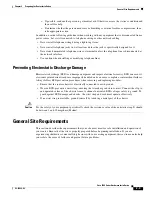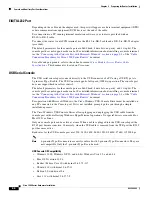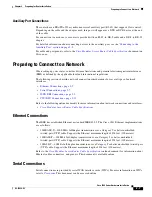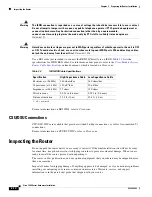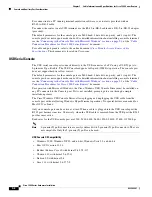
2-5
Cisco 1900 Series Hardware Installation
OL-19084-02
Chapter 2 Preparing for Router Installation
Network Cabling Specifications
Wireless LAN Considerations
Wireless communication is dependent upon the propagation of radio waves. Many environmental factors
influence radio waves. The Cisco Multiband Swivel-Mount Dipole Antenna document Installation Notes
section describes factors affecting this. Prior to determining a location for the router it is advisable you
review these factors.
http://www.cisco.com/en/US/docs/routers/access/wireless/hardware/notes/antdip.html#wp1009743
The type of antenna used with your wireless router and its location greatly impact the quality of wireless
connections to the router. Cisco 1900 series wireless routers are compatible with three different antenna
types—swivel-mount dipole antennas that mounts on the back panel of the router, a wall-mount antenna,
and a ceiling-mount antenna.
For more information about antenna coverage and optimal usage, see the following documents:
•
Cisco Multiband Swivel-Mount Dipole Antenna
•
Cisco Multiband Diversity Omnidirectional Ceiling-Mount Antenna
Network Cabling Specifications
The following sections describe the cables needed to install your Cisco 1900 series ISR in the following
sections:
•
Console and Auxiliary Port Considerations, page 2-5
•
Preparing to Connect to a Network, page 2-7
For cable connection procedures, see the
“Cable Connection Procedures for Cisco 1900 Series Routers”
document.
Console and Auxiliary Port Considerations
The router includes USB, asynchronous serial and auxiliary ports. The console and auxiliary ports
provide access to the router either locally using a console terminal connected to the console port, or
remotely, using a modem connected to the auxiliary port. This section provides important cabling
information to consider before connecting the router to a console terminal or modem.
The main difference between the console and auxiliary ports is that the auxiliary port supports flow
control, whereas the console port does not. Flow control paces the transmission of data between a
sending device and a receiving device. Flow control ensures that the receiving device can absorb the data
sent to it before the sending device sends more. When the buffers on the receiving device are full, a
message is sent to the sending device to suspend transmission until the data in the buffers has been
processed. Because the auxiliary port supports flow control, it is ideally suited for use with the
high-speed transmissions of a modem. Console terminals send data at slower speeds than modems;
therefore, the console port is ideally suited for use with console terminals.
Console Port Connections
The router has an EIA/TIA-232 asynchronous serial console port (RJ-45) and at least one USB Type-A
2.0 compliant ports. See
Table 1-1 on page 1-8
for a list of ports.

